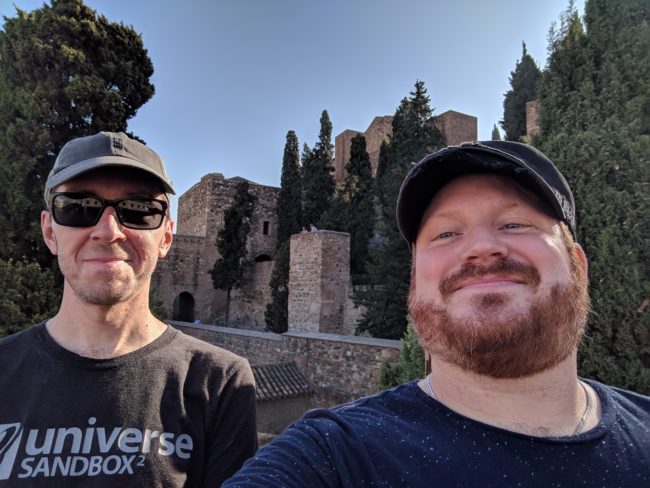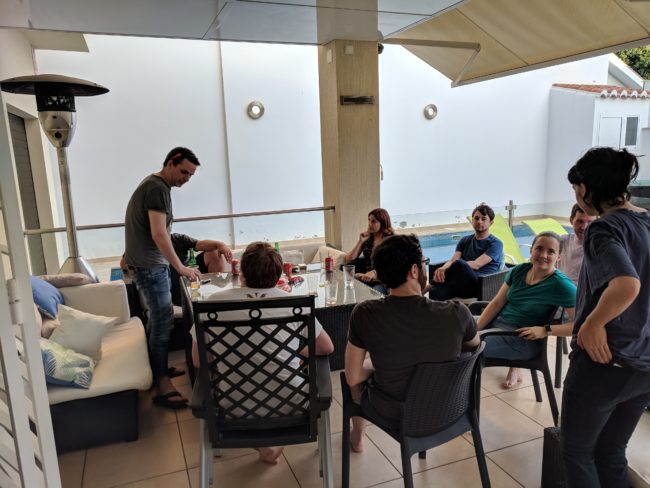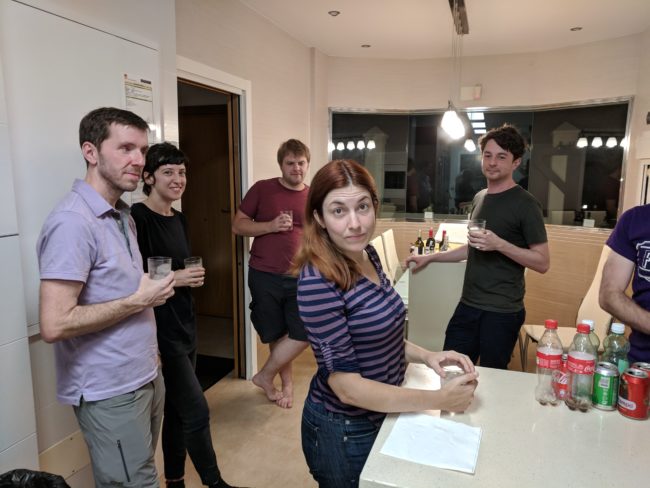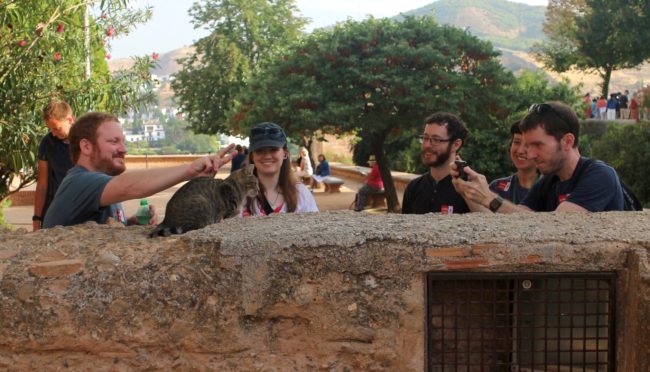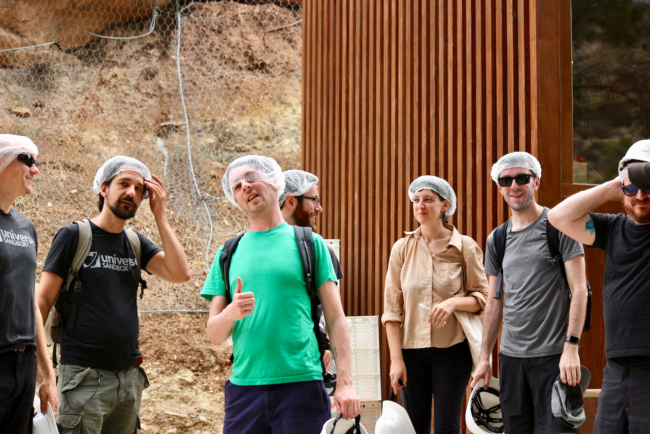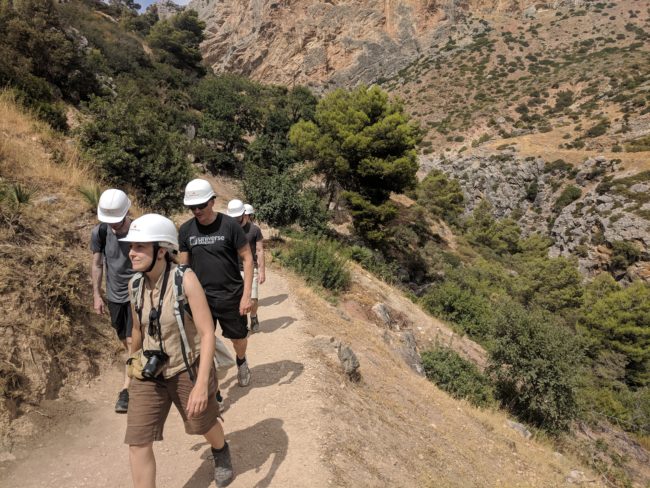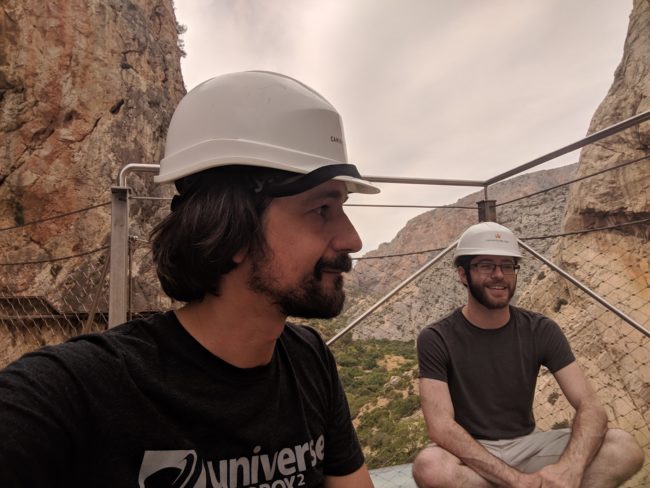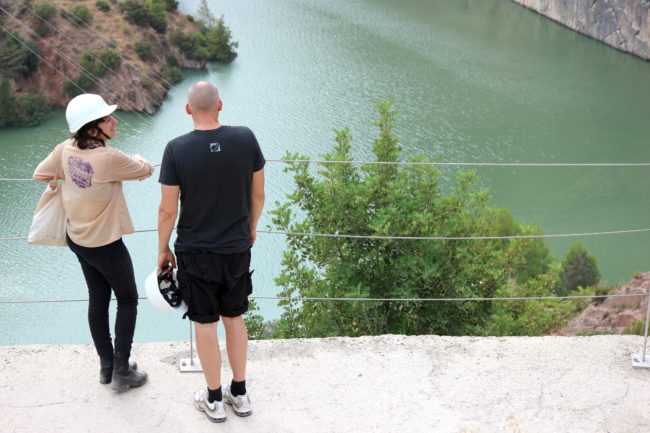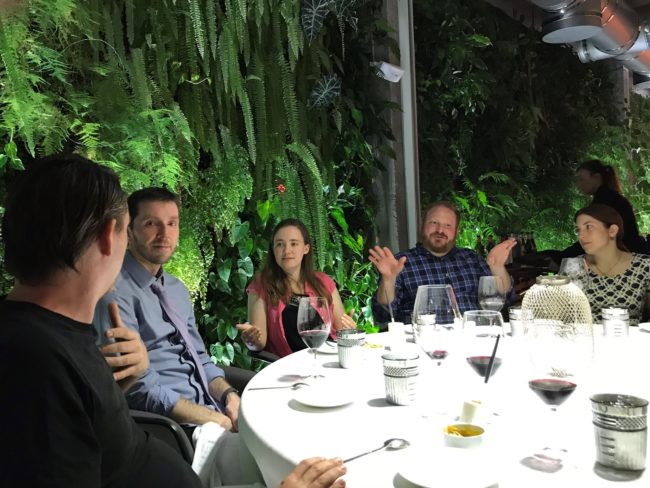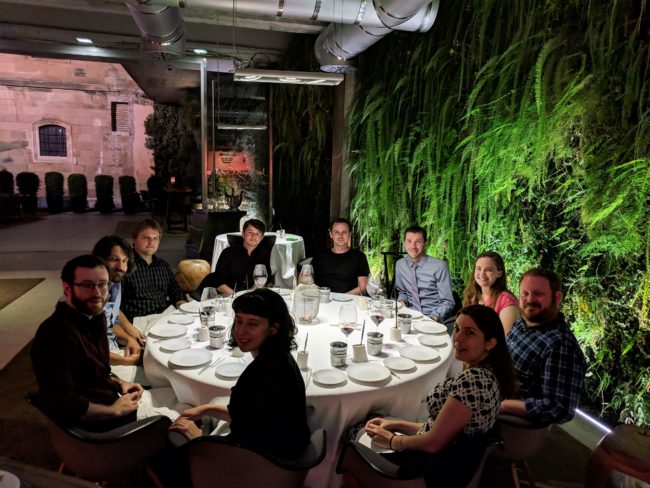Hiring a Spaceship Physics Developer
Jan 25th
Giant Army is looking for a physics developer to join our team. You will work with our senior physics developer, team scientists, and other developers to add the necessary physics and simulation code to bring realistic, sandbox-style spaceships to Universe Sandbox.
This is a full-time, remote position.
Join us. We’re making something incredible that’s unlike anything else.
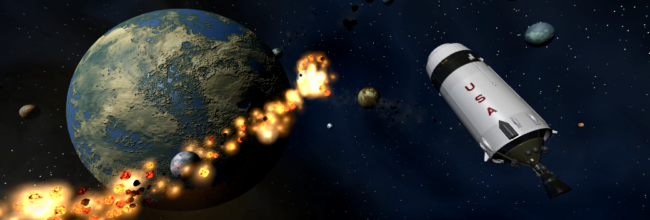
Your Role
- Develop rigid body simulation within our existing custom physics engine (we do not and cannot use Unity’s built-in physics)
- Build upon the rigid body simulation and innovate with spaceship features such as:
- Thrusters
- Data-driven historical simulations (Cassini, Voyager, etc.)
- Modular spaceship parts
- Destruction of spacecraft from heating, lasers, and collisions (both from other spacecraft and asteroids/planets/moons)
- Integration with our planned megastructures/tethers feature
Qualifications
- (Strong C# && Unity Engine experience) || (Experience with an entity component model && object-oriented programing)
- Experience with physics engine development
- Familiar with version control (we use GitHub), task-management systems (we use GitHub+ZenHub), unit tests, code reviews, and so forth
- Self-driven; comfortable working collaboratively and remotely
- Appreciation for, and focus on, realism and detail
- Passion for science, astronomy, spaceships, and real-time interactive simulations
- Love of fantastical what-if scenarios: what-if.xkcd.com (note citation #6 on 148)
Company Overview
Giant Army is the company behind Universe Sandbox. Our headquarters are in Seattle, Washington, USA, with team members across the United States, Germany, and Denmark.
Team members enjoy a flexible, collaborative environment. We strive for work-life balance, and we pursue the features that get us excited about science. We do the work so we can share it with others. We’re committed to creating an accessible experience that can’t be found elsewhere.
Science is for everyone, and we welcome all qualified applicants.
Product Overview
Universe Sandbox is a space simulator that merges real-time gravity, climate, collision, and physical interactions to reveal the beauty of our universe and the fragility of our planet. It’s more than a game; it’s a way of experiencing and learning about reality in a way that’s never been done before.
Universe Sandbox is available on Windows, Mac, Linux, and VR with mobile and future platforms planned. We’ve sold nearly half a million copies and have a “Very Positive” rating on Steam with 93% positive user reviews.
How to Apply
Resume and code sample required. Please either upload or include links.
Hiring a Graphics Developer
Jan 25th
This position has been filled. Thank you to everyone who applied.
If this still sounds like an ideal job for you, please reach out. We are always looking for more help from the right candidates.
Giant Army is looking for a graphics developer to join our team and help improve Universe Sandbox. You will be working closely with our team’s senior graphics developer to help develop, improve, and maintain assets and visual effects. As your skills and experience with the position grow, you will begin to research and develop entire visual subsystems of Universe Sandbox.
This is a full-time, remote position.
Join us. We’re making something incredible that’s unlike anything else.
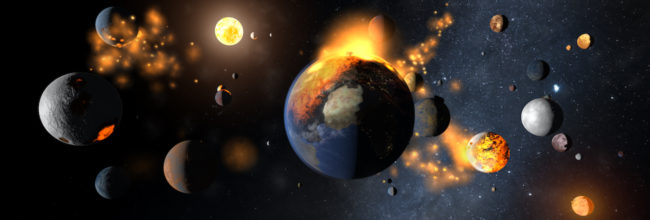
Your Role
- Maintain focus on interactive, realistic, and scientifically-accurate visual representations
- Work independently with guidance from our senior graphics developer, team scientists, and director
- Maintain source assets by integrating new data, such as updated elevation maps
- Prepare assets for use in the engine, such as importing and error checking models and textures, and creating and assigning materials
- Procedurally or manually generate textures for shader effects and surfaces
- Develop and maintain code used to connect visual and simulation systems
Qualifications
- (Strong C# & Unity Engine experience) || (Experience with an entity component model & object-oriented programming)
- Strong understanding of graphics pipelines, rendering techniques, and graphics-related math
- Experience writing and optimizing shaders (HLSL, GLSL, Cg)
- Appreciation for, and focus on, realism and detail
- Familiar with version control (we use GitHub), task-management systems (we use GitHub+ZenHub), code reviews, and so forth
- Self-driven; comfortable working collaboratively and remotely
- Passion for science, astronomy, and real-time interactive simulations
- Love of fantastical what-if scenarios: what-if.xkcd.com (note citation #6 on 148)
Company Overview
Giant Army is the company behind Universe Sandbox. Our headquarters are in Seattle, Washington, USA, with team members across the United States, Germany, and Denmark.
Team members enjoy a flexible, collaborative environment. We strive for work-life balance, and we pursue the features that get us excited about science. We do the work so we can share it with others. We’re committed to creating an accessible experience that can’t be found elsewhere.
Science is for everyone, and we welcome all qualified applicants.
Product Overview
Universe Sandbox is a space simulator that merges real-time gravity, climate, collision, and physical interactions to reveal the beauty of our universe and the fragility of our planet. It’s more than a game; it’s a way of experiencing and learning about reality in a way that’s never been done before.
Universe Sandbox is available on Windows, Mac, Linux, and VR with mobile and future platforms planned. We’ve sold nearly half a million copies and have a “Very Positive” rating on Steam with 93% positive user reviews.
How to Apply
This position has been filled. Thank you to everyone who applied.
If this still sounds like an ideal job for you, please reach out. We are always looking for more help from the right candidates.
2018 Retrospective
Jan 7th
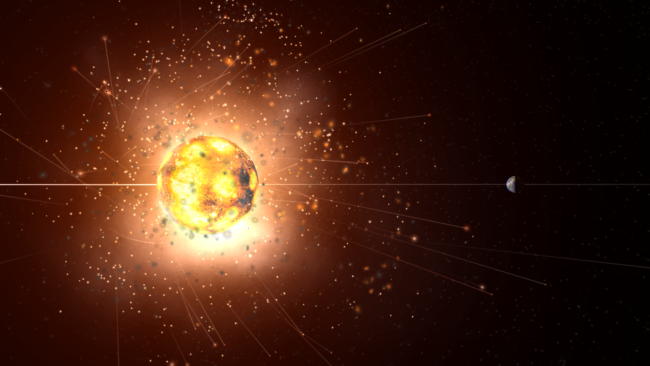
Happy New Year!
Before we take a look at what’s coming to Universe Sandbox this year, let’s take a look back at our achievements in 2018, by the numbers:
1
new team member: welcome, Jules, our new sound designer!
2
the # that was dropped from the logo.
That’s right, now it’s just Universe Sandbox. We’ll have more to say about this soon!
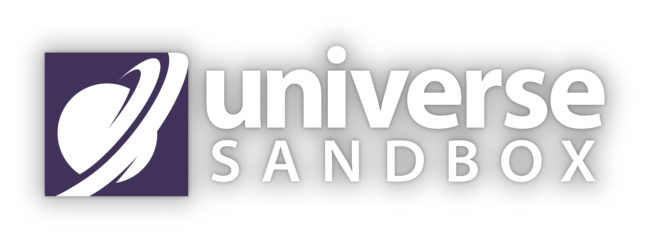
8
# of significant updates to Universe Sandbox.
- They Put a Car in Space, We Upgraded Our Engine | Update 20.5 | March 7, 2018
- More Super Supernovae | Update 20.6 | March 15, 2018
- This Hyperbolic Update Will Change Your Life | Update 20.7 | May 24, 2018
- 20 Earth Languages & 12 Jovian Moons | Update 21 | July 19, 2018
- Windows Mixed Reality Support | Update 21.2 | August 02, 2018
- The Extremes of Our Solar System | Update 21.3 | October 04, 2018
- The Universe Just Got Bigger: Steam Workshop Support | Update 22 | November 15, 2018
- Far Out | Update 22.1 | December 20, 2018
12
# of Universe Sandbox team members that fit into one house in Spain for a week.

21
# of new simulations.
- 2 Parker Solar Probe sims
- 2 Tesla Roadster sims
- 2 sims of Jupiter’s newly discovered moons
- New Horizons Ultima Thule Encounter in 2019
- 2018 VG18: The Most Distant Object in the Solar System
- 2015 TG387: A Goblin at the Edge of the Solar System
- Voyagers 1 & 2 Start 2019 Outside the Solar System
- Ultimate Engineered System
- Solar System with No Sun
- Kepler 10
- Kepler 47 Binary System
- Alpha Centauri Triple System
- Saturn & Earth
- Retrograde Asteroid 2015 BZ509
- Interstellar Object with a Hyperbolic Trajectory
- Solar System with Betelgeuse instead of the Sun
- Conservation of Momentum lesson
- Gravitational Force lesson
This just includes the simulations that we added, though. Scroll down for a much larger number of simulations that our community has shared on Workshop!

22
# of languages now supported in Universe Sandbox.

26
# of pages of release notes for Universe Sandbox updates in 2018.
Check out What’s New.
325
# of bugs fixed.
You know what they say, fixing a bug a day keeps the QA away. Just kidding, we can’t — and don’t want to — stop our awesome QA, Mat, from hunting down bugs in Universe Sandbox.
Not all of these bug fixes were notable for releases, as there are many bugs that are discovered and fixed while we’re still doing behind-the-scenes work with improving Universe Sandbox. We look forward to squashing hundreds more this year!
479
Highest # of concurrent users in Universe Sandbox in 2018 (happened on the week of August 6).
This is the fifth highest of all time for us.
1,114
# of positive Steam reviews of Universe Sandbox written in 2018.
All this love for Universe Sandbox really warms our cold, spaceborne hearts. <3

2,420
# of simulations shared on Steam Workshop.
That means there are literally thousands of simulations featuring alien planets and systems, recently discovered exoplanets, confounding scientific phenomena, worlds from movies, books, and other video games, and of course bizarre bugs (or are they features?), created by you, the community, now shared on Steam Workshop. We look forward to seeing this treasure trove continue to grow.
7,160
# of copies of Universe Sandbox donated for charity.
This year we donated copies to StackUp for distribution to military personnel, donated proceeds to the National Center for Science Education, provided copies to schools and educational organizations, and donated copies for various fundraisers for people doing awesome things, like all the folks at CosmoQuest.
12,694
# of objects added to the Universe Sandbox database.
That’s 11,973 new Solar System objects, 387 new exoplanets, 310 new stars, 21 new moons, 2 new human-scale objects, and 1 new galaxy.
95,736
# of messages sent on Slack.
We’re a remote team, so other than some video chats and comments on GitHub, all of our conversations happen on Slack. It’s what makes our collaboration on Universe Sandbox possible!
>100,000
# of copies sold on Steam and other platforms.
Or, on average, one copy sold every five minutes — comfortably keeping pace with last year!
4,506,463
# of views of Markiplier’s two recent videos featuring Universe Sandbox.
These were the most watched Universe Sandbox videos on YouTube this year. And this brings the total number of views of Markiplier’s Universe Sandbox videos to… 35,522,196. Granted, 24 million of those views are on the so-catchy-you-really-will-regret-being-reminded-of-it Space is Cool remix, but we’ll take some credit for providing a bit of inspiration and a nice backdrop for Markiplier’s auto-tuned cries of love for space. Many thanks to Markiplier for helping spread the word!
Can you BLOW UP a BLACK HOLE: https://youtu.be/LW6S74J4kA8
1000 WAYS to DESTROY EARTH: https://youtu.be/4FEdjWW98QI
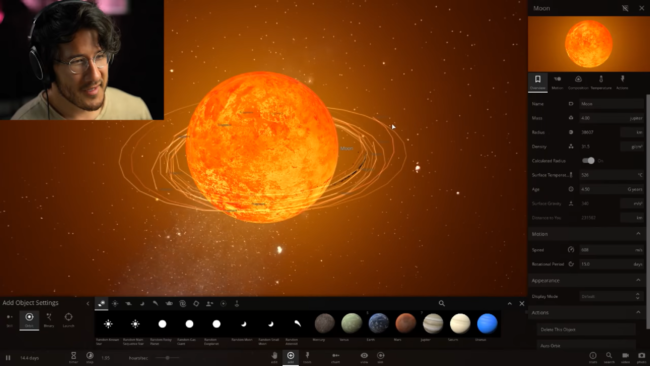
>6,000,000
# of supernovae in Universe Sandbox.
According to our analytics, y’all have exploded more than 6 million stars. Needless to say, that’s an accomplishment.

What’s Next?
Our big features this year were Localization (support for other languages) and Steam Workshop. A lot of time and effort went into these features, and we think they’re a pretty big deal — Localization opens up Universe Sandbox for the first time to people all over the world, and support for Workshop has made it super easy to check out an ever increasing catalogue of simulations made by people pushing the limits of Universe Sandbox.
But we also recognize that these features did not change any aspects of the simulation itself. And the simulation is the heart of Universe Sandbox. While we made a number of some smaller improvements and fixes related to the simulation, we unfortunately ran into continual issues with two big updates that we had hoped to get out this year — Surface Grids / Lasers and a physics rewrite. Surface Grids will allow for more detailed surface simulation, including localized temperatures, which makes possible things like heating from lasers. The physics rewrite should greatly increase physics performance and pave the way for additional physics-related features, like megastructures.
We hope to have more news about Surface Grids soon, along with some insight into some of the obstacles we’ve faced with its development. We also continue to work on other projects like new star audio, a new tutorial system, a VR interface overhaul, new galaxies, a mobile version, and continual improvements to the overall experience.
We thank all of you for your continued support of Universe Sandbox! This year we remain committed to improving Universe Sandbox as we develop and plan new features, upgrades, and fixes for 2019 and the years to come.
– The Universe Sandbox Team
Dan, Chris, Georg, Alexander, Jenn, Jonathan, Dave, Rappo, Mat, Jacob, Erika, Jules, and Jared
New Year, New Limits of our Solar System for New Horizons
Dec 31st
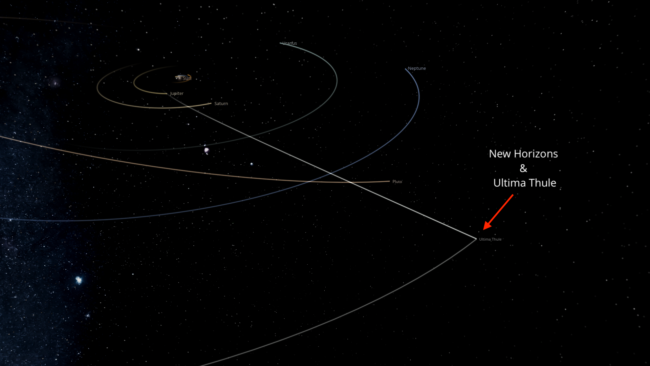
Happy New Year!
While we celebrate one more trip of our beautiful planet around the Sun, the spacecraft New Horizons sets a record for traveling to the most distant object in our Solar System ever visited, 2014 MU69, nicknamed “Ultima Thule.” This object is currently 1 billion miles beyond Pluto, or more than 43 AU from the Sun, which means it is more than 43 times the distance between the Earth and the Sun. New Horizons is expected to make its closest approach to Ultima Thule shortly after midnight EST January 1, 2019.
Check out the flyby in Universe Sandbox:
Home > Open > New Horizons Ultima Thule Encounter in 2019
New Limits for New Horizons
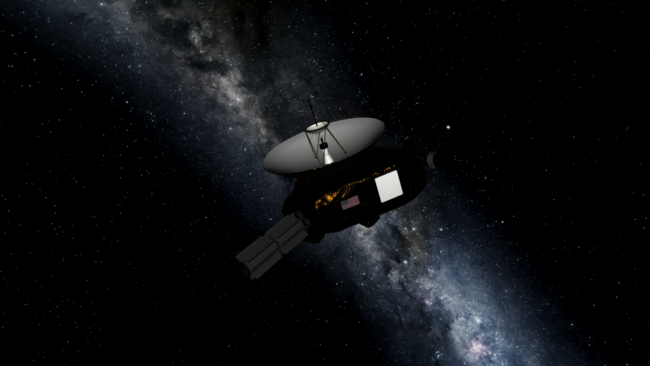
After the record-setting 2015 flyby of Pluto and its moons, the New Horizons spacecraft continued its journey through the outer reaches of the Solar System. In that same year, NASA selected a new target for New Horizons to observe: a Kuiper Belt object discovered by the Hubble Space Telescope the year earlier, known as 2014 MU69. Unofficially named Ultima Thule in 2018 based on a public vote, this object will be the most distant ever visited by a human spacecraft (breaking the record New Horizons itself set when it flew past Pluto).
The team says it hopes to set a new target for New Horizons once it passes Ultima Thule. With plenty of remaining fuel and equipment and instruments that remain in good condition, New Horizons is all set to head toward another distant object in the Kuiper Belt, arriving sometime in the 2020s, the team said.
Simulation Limitations
Simulations in Universe Sandbox are not perfect representations of reality. Rather, they’re meant to provide a visual — and as a result, a more intuitive understanding — of what is happening farther away than we can see or even imagine. With that in mind, there are a couple of limitations currently in this simulation:
1 – Trajectory
The trajectory shown is according to the NASA Jet Propulsion Laboratory’s orbital predictions as of September 2018. Additional maneuvering with thruster burns is expected, which would change the final trajectory. New Horizons will make an approach much closer than is represented in the simulation: it should pass about 3,500 km from 2014 MU69. Once actual trajectories have been recorded, we will update the simulation.
2 – Shape
Previous observations show that 2014 MU69 is likely not spherical, but rather cigar-shaped. Researchers suspect that Ultima Thule may even be two separate bodies that are either orbiting very closely as a binary or actually touching each other, which is called a contact binary. We should know more once New Horizons sends back data from its flyby! Right now, Ultima Thule is represented in Universe Sandbox as just a single, spherical body.
Other Far Out Objects
Update 22.1 of Universe Sandbox added three other simulations that feature very distant objects in our Solar System.
1 – Voyagers 1 & 2 in Interstellar Space
In November 2018, more than 40 years after its launch, and long since trips past Jupiter, Saturn, Uranus, and Neptune, the Voyager 2 probe entered interstellar space. It now joins its twin, Voyager 1, in exploring beyond our Solar System. They are expected to continue to send back data until they run out of power in 2025.
Home > Open > Voyagers 1 & 2 Start 2019 Outside the Solar System
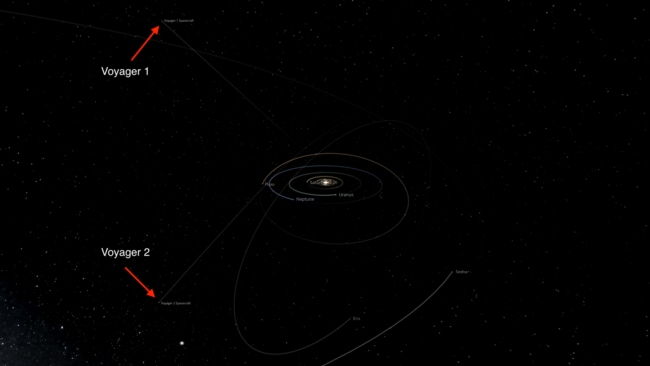
2 – 2018 VG18, “Farout”
On December 17, 2018, astronomers announced the discovery of the most distant known object in the Solar System, 2018 VG18. Nicknamed “Farout” (can you guess why they chose that name?), the trans-Neptunian object is currently around 120 AU (1 AU is the distance from the Sun to the Earth) from the Sun. While this object is the most distant ever observed, there are other known objects, like Sedna and the Goblin (see below), that have orbits that take them much farther from the Sun.
Farout’s orbit shown in this simulation is a preliminary estimate; its distance means it will take years of observation before its precise orbit is known.
Home > Open > 2018 VG18: The Most Distant Object in the Solar System
3 – 2015 TG387, “The Goblin”
On October 1, 2018, astronomers announced the discovery of the trans-Neptunian object 2015 TG387, which they nicknamed “The Goblin.” It was observed at about 80 AU from the Sun, but because of its extremely elongated orbit, it likely travels to a distance of more than 2300 AU at its farthest point.
Home > Open > 2015 TG387: A Goblin at the Edge of the Solar System
Far Out | Update 22.1
Dec 20th
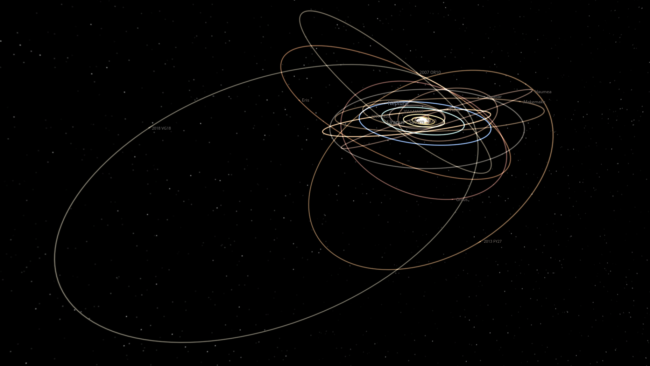 The orbit stretching to the bottom left is 2018 VG18, the most distant known object in the Solar System. The orbit shown here is a preliminary estimate; more accurate data will be available only after years of observation.
The orbit stretching to the bottom left is 2018 VG18, the most distant known object in the Solar System. The orbit shown here is a preliminary estimate; more accurate data will be available only after years of observation.
Run Steam to download Update 22.1, or buy Universe Sandbox via our website or the Steam Store.
This is a small update that adds a few new sims in addition to dozens of improvements and bug fixes.
Check out these sims featuring incredibly distant Solar System objects, including the recently announced 2018 VG18, nicknamed “Farout”:
Home > Open > 2018 VG18: The Most Distant Object in the Solar System
Home > Open > 2015 TG387: A Goblin at the Edge of the Solar System
Home > Open > Voyagers 1 & 2 Start 2019 Outside the Solar System
Don’t forget to check out New Horizons’ upcoming flyby of the most distant Solar System object ever visited, scheduled for January 1, 2019:
Home > Open > New Horizons Ultima Thule Encounter in 2019
And here are some highlights from the long list of improvements and fixes:
- Smarter autosaves
- Improvements & fixes for opening, saving, & sharing sims
- Better randomized properties for randomly created objects
- Fixes for issues with frozen fragments & missing orbit previews
- Restored visuals for explosions & fragments
Happy holidays! Stay tuned after the New Year for a recap of this past year and a look at what we’ve got in store for 2019.
Check out a full list of What’s New in Update 22.1
Please report any issues on our forums (local forum | Steam forum) or in-game via Home > Send Feedback.
Follow @universesandbox
The Universe Just Got Bigger: Steam Workshop Support | Update 22
Nov 15th
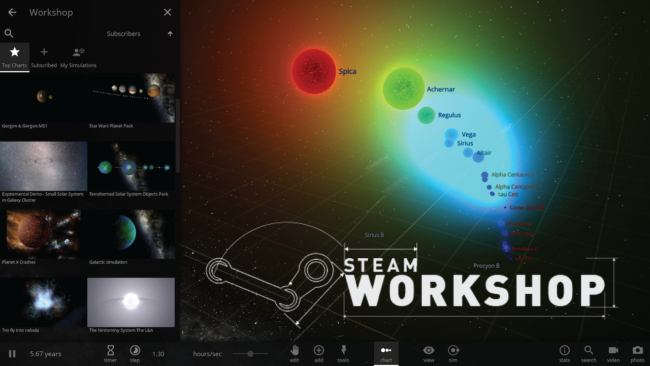
Run Steam to download Update 22, or buy Universe Sandbox ² via our website or the Steam Store.
Create and share your simulations and explore the creativity of the Universe Sandbox community!
Home > Workshop
Home > Save > Share to Steam Workshop
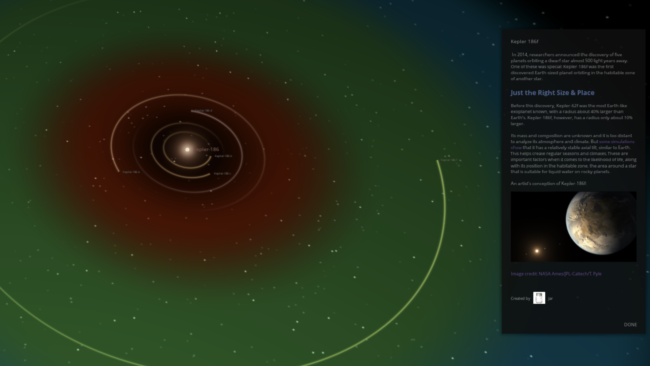
Use the new custom sim descriptions to detail the lore of your sci-fi worlds. Or discuss the reality behind the scientific phenomena in your simulations.
This update also includes changes to the interface with new tools for manipulating Property values plus styling improvements throughout. There’s a new autosave system to prevent accidental loss of work, and as always, there are lots of smaller improvements and bug fixes. See the full list of What’s New
Please report any issues on our forums (local forum | Steam forum) or in-game via Home > Send Feedback.
Notes:
1) Workshop only supports simulations at this time. In the future, we hope to add support for custom textures and models.
2) Workshop is only available for the Steam version of Universe Sandbox. We’d love to use our own system in the future for sharing and exploring community sims on any platform, but we don’t have a timeline for this yet.
3) As of this update, Universe Sandbox no longer supports DirectX 9 or 32-bit operating systems. Users can run the last compatible version by selecting “*directx9-32bit” via Steam Betas (learn how). For more information on our decision to end support for DirectX 9 & 32-bit systems, please see our announcement from earlier this year.
The Extremes of Our Solar System | Update 21.3
Oct 4th
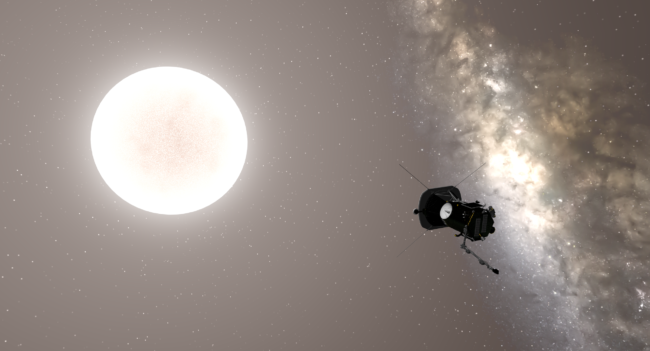
Run Steam to download Update 21.3, or buy Universe Sandbox ² via our website or the Steam Store.
This is a small update that features a new Parker Solar Probe model and new simulations exploring extremes in our Solar System:
Skim past the Sun with the Parker Solar Probe. The probe was launched in August and now has 24 trips around the Sun planned for its 7-year mission. Each year its orbit will take it closer to the Sun as its instruments capture data that will help us better understand our resident star. Its closest approach will bring it within 8.86 solar radii, or 3.83 million miles, of the Sun’s surface, more than 7 times closer than any previous spacecraft.
Home > Open > The Parker Solar Probe
Home > Open > The Parker Solar Probe’s Closest Approach to the Sun
Add > Objects > Parker Solar Probe
And ride along with New Horizons as it continues through the far reaches of our Solar System past Ultima Thule. After the probe’s flyby of Pluto and its moons in 2015, NASA selected the Kuiper Belt object Ultima Thule as its next target. When New Horizons makes its closest approach on January 1, 2019, Ultima Thule will become the farthest object ever visited by a spacecraft.
Home > Open > New Horizons Ultima Thule Encounter in 2019
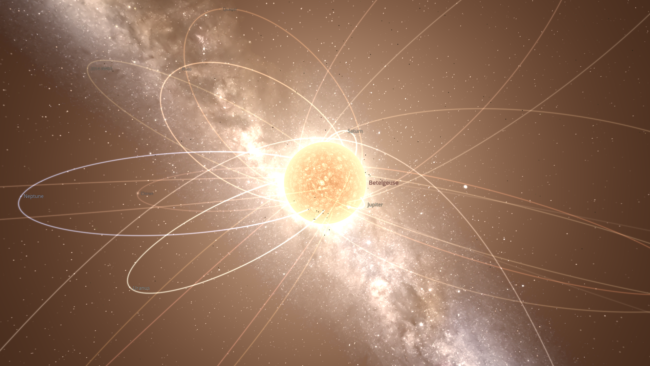
Plus: what if our Sun was replaced with one of the largest known stars in the universe, the red supergiant Betelgeuse?
Home > Open > Solar System with Betelgeuse Instead of the Sun
This update also includes an improvement to the accuracy of positions for moons and other objects in the Solar System Now & Real Time simulation, plus a few other smaller improvements and bug fixes.
Check out a full list of What’s New in Update 21.3
Please report any issues on our forums (local forum | Steam forum) or in-game via Home > Send Feedback.
The Universe Sandbox Team Meetup
Oct 2nd

The Universe Sandbox team pointing at something that was most certainly very interesting. Left to right, back to front: Jonathan Hoy, Christian Herold, Dave Nelson, Alexander Grønneløv, Georg Steinröhder, Erika Nesvold, Mat Solomon, Dan Dixon, Jules Litman-Cleper, Jenn Seiler, Jared Meier, David Rappo. Not pictured: Jacob Williams, VR Developer (see Unity’s story on Jacob for a lovely picture of him), Ryan Macoubrie, Composer
We recently had the privilege and pleasure of uniting [nearly] the whole Universe Sandbox team in person under one roof on the southern coast of Spain for an entire week.
In the seven years since Dan hired two developers to begin work on the latest version of Universe Sandbox, our team has grown to 14 strong. In the past two years alone, we have added six members to our team. So for some of us, this meetup meant seeing familiar faces, but for many, this was the very first time meeting each other in person.
While there are countless benefits to having a remote team spread across the globe, there are drawbacks as well — not the least of which is the limited opportunity to experience each other not just as coworkers, but as fellow humans with families, wide-reaching interests and hobbies, and large catalogues of cheesy jokes. This was a chance for us to have conversations that weren’t at all related to code architecture, simulation performance, pesky bugs, or features on our roadmap. Though of course, we couldn’t help ourselves from having those conversations, too.
And importantly, we set aside time to take a step back from the details and appreciate this massively ambitious and unique project we are all a part of and discuss the future that it holds. Believe us when we say our wishlist for the future of Universe Sandbox is not brief.
We’ve now returned to our homes in Germany, Denmark, Australia, and across the United States in Seattle, Portland, St. Louis, Chicago, Birmingham, D.C., Philadelphia, New York City, and Boston, reinvigorated and excited to get back to making Universe Sandbox bigger and better.
We continue to be ever grateful for all of the support we receive from our loving community that makes all of this possible.
Scroll on for proof that we all get along and had a great time hiking, touring historical sites, and of course, eating:
Ending Support for DirectX 9 & 32-bit Operating Systems
Aug 14th
Universe Sandbox will no longer support Windows users running DirectX 9 or 32-bit operating systems later this year. The exact date and release are not known at this time, but we want to give everyone a heads-up.
November 2018: As of Update 22, Universe Sandbox no longer supports DirectX 9 or 32-bit operating systems. Users can run the last compatible version by selecting “*directx9-32bit” via Steam Betas. Learn how
Why?
Short answer:
These are technologies that have been replaced in mainstream computing over a decade ago. There are very few users left on these systems, and it is getting harder to support them as time goes on. This will help us continue to make improvements to performance and stability into the future.
Long answer:
The game engine we use, Unity3D, stopped supporting the DirectX 9 API last year. Unity states that “due to diminishing hardware numbers and the loss of platform support from Microsoft … continued support of the DirectX 9 API is no longer feasible and is working against the development of new features in Unity.” This move mirrors the direction taken by many other companies for their software and video games, including Blizzard’s popular Heroes of the Storm.
The same is true for discontinuing support of 32-bit OSes, as hardware manufacturers like Nvidia are no longer updating 32-bit drivers with new features, Apple is gearing up to drop all support for 32-bit applications, and World of Warcraft is now going to be 64-bit only.
The vast majority of Universe Sandbox users are already running 64-bit, and our ability to focus on and develop only this version will help us continue to make improvements to Universe Sandbox’s stability and performance into the future.
Who Will Be Affected?
This will not affect macOS or Linux users, and if you are on Windows, chances are good that you are already running modern hardware with support for later versions of DirectX and a 64-bit OS that will not be affected by this.
But in case you aren’t, here’s what you need to know:
- This will end support for any Windows versions below Windows 7 SP1+
- DirectX 10 may work, but we recommend DirectX 11 | Find out which version you’re running
- You must run a 64-bit version of Windows | Find out which version you’re running
What Should I Do If I’m Affected?
Upgrade to a newer version of DirectX:
We recommend upgrading to at least DirectX 11. Follow these instructions to find out which version you’re running and view information about upgrading, if needed.
Some older GPUs do not support DirectX 11. You will need to find information about your GPU or contact the manufacturer to see what versions of DirectX it supports.
Upgrade to a 64-bit OS:
If you’re running Windows 7 through 10, you’re able to upgrade to 64-bit for free. Here is one guide for upgrading Windows 10.
You will need to upgrade to a newer version of Windows if you are running a version older than Windows 7.
If you can’t upgrade:
We will offer a DirectX 9, 32-bit compatible version of Universe Sandbox via Steam. This version will not continue to be updated or supported; it will be the last update before we move onto DirectX 11, 64-bit versions only.
November 2018: As of Update 22, Universe Sandbox no longer supports DirectX 9 or 32-bit operating systems. Users can run the last compatible version by selecting “*directx9-32bit” via Steam Betas. Learn how
If you have any questions or concerns, please contact us.
Windows Mixed Reality Support | Update 21.2
Aug 2nd
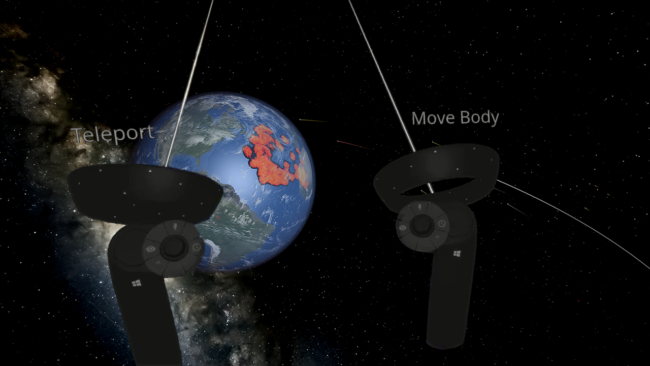
August 13: Update 21.2.1 is a small update that includes a few minor improvements, bug fixes, and updated translations.
Update 21.2 introduces official VR support for Windows Mixed Reality devices. If you own WMR, just launch Universe Sandbox from Windows Mixed Reality for SteamVR and start throwing planets.
There are also a handful of small bug fixes and improvements to the core Universe Sandbox experience. Check out the full list of What’s New in Update 21.2
Issues? Feedback? Let us know on our forums (local forum | Steam forum) or in-game via Home > Send Feedback.

